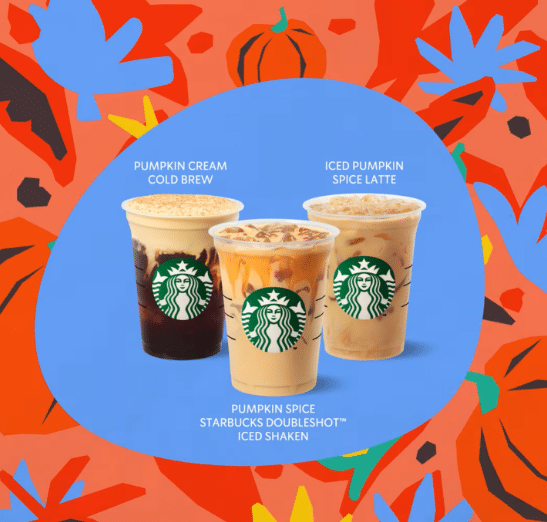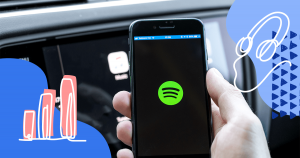Marketing campaigns are the cornerstone of successful business strategies, leveraging creativity and data-driven insights to connect with ever-evolving consumer demographics.
As the composition of target audiences changes, with factors such as age, location, cultural background, and preferences influencing buying behaviors, marketing professionals need to adapt their approaches to address these dynamics.
Marketing campaigns take plenty of prep work. We’ll look at what to prioritize based on real-world examples and how to get it right.
- What is a Marketing Campaign?
- Goals of Marketing Campaigns
- Types of Marketing Campaigns
- Planning a Marketing Campaign in Easy Steps
- Marketing Campaign Examples to Get Inspiration From
- Marketing Campaign Secrets
- Marketing Campaign Greatest Mistakes
- Marketing Campaign Budgeting
- Marketing Campaign Tools and Their Benefits
- Marketing Campaigns FAQs
- Conclusion
What is a Marketing Campaign?
A marketing campaign is a strategic, coordinated series of promotional activities designed to achieve specific business goals such as brand awareness, customer engagement, or increased sales.
It typically involves multiple channels and tactics, including advertising, social media, content marketing, and email marketing, all working together to deliver a unified message and drive measurable outcomes.
A marketing campaign promotes products, causes, or services via multiple mediums (digital, print, TV, radio, etc.) and clever content creation.
Marketing campaigns vs. advertising campaigns
Marketing campaigns are broader and more flexible than advertising campaigns.
For example, you might run a marketing campaign demonstrating how to use your company’s blender after purchasing it, which can help with customer retention and satisfaction.
In contrast, an advertising campaign focuses specifically on promoting the features of the blender to increase sales.
Goals of Marketing Campaigns
Marketing campaign goals run the gamut. We’ll look at the most common objectives and why they matter.
1. Building brand awareness
Brand awareness is an ongoing project for all marketers. Consider that the well-known Starbucks spent more than $416 million on marketing and brand ad campaigns in 2022 to increase awareness about the brand.
2. Driving sales and conversions
If customers don’t know about your product and how it can help them, they may not even realize they need it. The best marketing campaigns provide practical and engaging information to drive sales.
As founder Peter Drucker says,
The aim of marketing is to know and understand the customer so well the product or service fits him and sells itself.
3. Engaging and retaining customers
Marketing campaigns spark excitement in your customers, which can lead to initial engagement and long-term retention.
4. Generating leads
High-quality leads stem from trust. An effective marketing campaign can impart reliability to the consumer and inspire them to provide their personal information that you can use to tailor your campaigns to suit your demographics even more.
5. New customer demographics
Marketing campaigns can test the waters with new audiences. You might find strong demand among another demographic simply by twisting your original message to fit their lifestyles.
Types of Marketing Campaigns
Before you settle on a campaign strategy, you should know your options.
Product launch campaigns
Product launch campaigns generate buzz for new products. Apple is famous for not just announcing the brand’s newest products but also for crafting narratives during exciting demonstrations of what their new devices can do.
Seasonal campaigns
Seasonal campaigns highlight a limited-time product. When fall rolls around, Starbucks reminds everyone of their famous Pumpkin Spice Latte, to the point where people associate the season change with the drink.
Rebranding campaigns
Rebranding campaigns revamp a product, usually for a new audience. Old Spice famously moved away from their elderly demographic with humorous messages for younger men.
Their campaign led to an 11% increase in sales in the first year.
Email marketing campaigns
Email marketing campaigns rely on emails to promote specific facets of a brand.
For example, Airbnb tracks user activity and sends personalized property recommendations based on customer preferences.
Social media campaigns
Social media campaigns can rely on anything from contests to influencer posts.
When “Wednesday” debuted on Netflix, the company set a disembodied hand loose in NYC, filmed people’s reactions, and uploaded the videos on YouTube to promote the show.

Marketing pioneer Don Schultz advises that “Social media creates communities, not markets.”
Content marketing campaigns
Content marketing campaigns supply helpful information to support the brand’s audience and spread general awareness.
Rock Content is notorious for tailoring its how-tos, recommendations, social media posts, blog posts, etc. to discerning crowds.
As CEO David Beebe put it, “Content marketing is like a first date. If you only talk about yourself, there won’t be a second one.”
Influencer marketing campaigns
In this campaign type, influencers and brands partner to promote a product or service.
Meal kit company HelloFresh famously invited Neil Patrick Harris to do instructional videos after receiving their kits.
Planning a Marketing Campaign in Easy Steps
Regardless of the type of campaign you’re looking for, marketing campaigns should be divided into several key steps.
Step 1: Define your goals and objectives
Your goals should be specific, measurable, attainable, relevant, and time-bound (that is, SMART). So, if you were launching a new book, you might run a three-week campaign on Facebook and Twitter with a target sales goal of 1,000 units.
Step 2: Understand your target audience
Income, age, location, and preferences are just a few ways to break down your audience. You need to know what they’re looking for before you create your messaging.
Step 3: Develop your Unique Selling Proposition (USP)
Your USP sets you apart from the competition, which means you need to figure out the most important aspect of your product. For example, if your product is cheaper and more durable than your competitors, you must narrow it down.
As Warren Buffett reminds us, “Price is what you pay. Value is what you get.”
Step 4: Choose your marketing channels
Your marketing channels can be anything from paper flyers to digital banner ads to social media. You’ll have to know where your target audience spends their time so you can allocate resources accordingly.
Step 5: Create a content calendar
Your content needs to shine above everyone else’s, and it’s a tall order. A content calendar helps you structure each video, photo, and text so it’s released to the right people at the right time. Platforms like WriterAccess can help you get better content for every campaign.
Step 6: Execute your campaign
When you launch your campaign, stick with the general idea while still leaving some room for adjustments. Remember that campaigns, particularly brand awareness campaigns, may take time to catch on.
Step 7: Measure and analyze results
You’ll need specific monitoring policies to measure and analyze results. For example, you might set a certain number of social engagements (e.g., likes, shares, etc.) to measure the engagement of a post.
Marketing Campaign Examples to Get Inspiration From
Some companies just get it right. We’ll look at who takes the cake with these iconic ad campaigns.
#1: Coca-Cola’s “Share a Coke” campaign
The “Share a Coke” campaign removed Coca-Cola’s name from labels and replaced it with different people’s names. This way, you could joyfully share a personalized beverage with a loved one.
Author Jared Kintz points out that “You will get more word of mouth from making people happy than anything else you could possibly do.”

#2: Google’s “Year in Search” campaign
This campaign showed people the most popular search topics over the year. This small glimpse into people’s curiosities and interests was a fun and engaging way for the brand to promote itself.

#3: Tinder’s “It Starts with a Swipe” campaign
This rebranding effort featured product ads with couples meeting each other over the app. It successfully repositioned the digital asset as more than just a place for casual dates.

#4: Snicker’s “You’re Not You When You’re Hungry” campaign
Snickers ran ads with different celebrities to illustrate how people change when hungry. For example, football players tackled stars like Betty White and then transformed after eating the candy bar.

Marketing Campaign Secrets
Marketing campaigns don’t have to be so tricky when you use our secrets.
#1: Leveraging data and analytics
Monitoring and tracking tools are more advanced than ever before. You should have a way to tap into the patterns that determine your final results.
#2: Personalization and customer experience
The goal is always to speak to the customer (and no one else) whenever possible. Leverage customer data to segment your audiences and personalize your campaigns.
#3: Consistent brand messaging across channels
You can adapt your brand messaging based on the demographic and platform, but there should be a unifying theme behind all messaging.
#4: Leveraging storytelling
Stories don’t just stick with customers; they can help them form connections with your brand. Lean on your best tales to illustrate what your brand does best.
#5: Stay in the game
Not all marketing campaigns are winners, but they all raise brand awareness to some extent. Use the results of your campaigns to iterate for the next time, and keep evaluating new tactics to determine if they’re good for your brand.
Marketing Campaign Greatest Mistakes
Mistakes are common in marketing, so keep a lookout for the following.
Lack of clear objectives
Objectives should be as specific as possible. In other words, if your goal is lead generation, you need to define not just the types of leads you want. Include how many leads you expect by the end of the campaign and what you expect those leads to do.
Poor audience targeting
The more granular you can get with audience targeting the better. So, instead of targeting parents between the ages of 20 and 30, create an ideal customer persona that spells out the parent’s income level, location, buyer habits, etc.
Ignoring analytics and feedback
This is a tricky mistake because campaigns often take time to catch on. However, you’ll need to set clear boundaries on how long you’re willing to wait before you start paying attention to the data and feedback that points to unsuccessful efforts.
Inconsistent messaging
When a product or service is complex, it’s easy for people to become confused. Your messaging needs to be crystal-clear to an ultra-distracted customer.
As founder Milena Glimbovski put it, “Be your own best customer. Live your customer’s lifestyle.”
Marketing Campaign Budgeting
Your budget may restrict you from certain campaigns, but it also sets parameters that you can use to do more, even if you have limited resources.
Setting a Realistic Budget
Realistic budgets are as much about what you have as what you can lose. Make sure you’re reining in your budget whenever possible and being creative to avoid poor ROI.
For example, suppose your total marketing budget is $10,000. In that case, you might allocate $3,000 to digital ads, $2,000 to influencer partnerships, $1,500 to content creation, and keep the remaining $3,500 as a contingency fund for unexpected expenses or to boost high-performing campaigns.
Allocating Resources Efficiently
Influencers, digital ads, marketing consultants, and content creators all cost money. You’ll need to know your audience backward and forward before deciding what to prioritize.
For instance, if your research indicates that influencer marketing drives significant engagement, you might allocate more funds toward influencer partnerships.
Monitoring and Adjusting Budget as Needed
The budget is meant to be your best guess. In other words, it’s not set in stone. Ensure that your campaigns are flexible enough to adjust when needed.
For example, if you find that one social media ad with a budget of $500 is vastly outperforming another with the same budget, you may want to reallocate funds from the underperforming ad to the successful one to maximize ROI.
Marketing Campaign Tools and Their Benefits
You can use marketing tools as a way to manage the many steps of your campaign.
Project management tools
Tools like Asana and Trello can help everyone stay on top of their tasks, and alert people if they’re starting to go off track.
Analytics tools
Google Analytics and SEMrush can monitor the short-term response for real-time adjustments and long-term results for more accurate assessments of campaign success.
Social media management tools
Tools like Hootsuite and Buffer help you schedule your social media posts and monitor their results. These are especially useful if you’re branching out into new platforms and audiences.
Email marketing tools
Tools like Mailchimp and Constant Contact help you design clever and artful emails and send them out when your audience is most likely to open them.
Content creation and design tools
Tools like the ones within WriterAccess, Canva, and Adobe Creative Suite can help you create and format content to fit different platforms and campaigns.
Marketing Campaigns FAQs
What is in a marketing campaign?
Marketing campaigns consist of various content designed to promote a brand.
What are the 5 essential parts of a marketing campaign?
You’ll need measurable goals, target audiences, a unique selling proposition, well-crafted content, and marketing channels.
How many types of marketing campaigns are there?
Common marketing campaigns include product launches, seasonal, rebranding, social media, influencer, and content marketing.
What are the 3 pillars of the marketing campaign?
Promotion, education, and attraction: These three elements make your customers aware, tell them more about your brand, and incentivize them to take action.
What is the basic marketing campaign plan?
The basic marketing campaign consists of branded messaging released via a marketing channel (e.g., paper flyers, Google ads, etc.).
Conclusion
Even seasoned marketers struggle with creating relevant and successful marketing campaigns.
The best thing you can do is plan ahead and use the available data to identify which words, visuals, and channels will really connect with your customer.
Keep our suggestions and ad campaign examples in mind to help you keep up with a rapidly changing consumer base.
And if you’re looking for better content, WriterAccess can help you with more than just a few captions or blog posts. See how we make the content creation process a lot simpler.
Try WriterAccess for free for 14 days to see what it can do for your brand!








